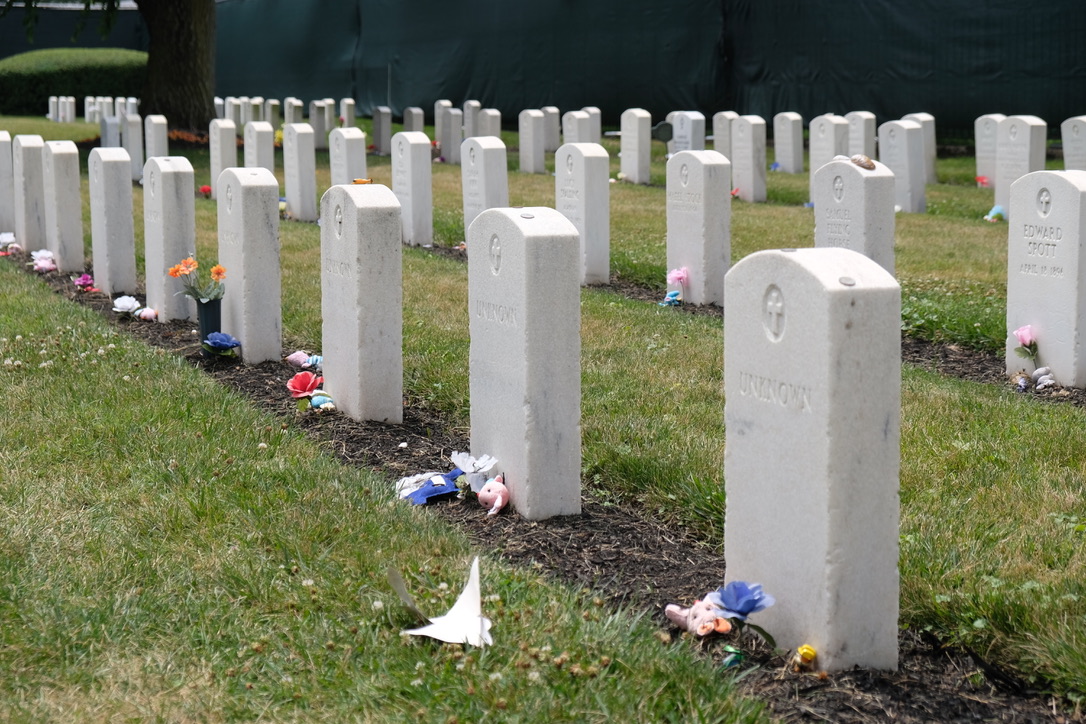
- Details
- By Jenna Kunze
Today, September 11, the U.S. Army will begin its sixth disinterment project to reunite the remains of five Indigenous children who died more than a century ago with their descendant relatives and communities.
Those students include: Edward Upright, from the Spirit Lake Tribe in North Dakota; Amos LaFramboise, from the Sisseton Wahpeton Oyate of the Lake Traverse Reservation in South Dakota; Beau Neal, from the Northern Arapaho Tribe in Wyoming; Edward Spott from the Puyallup Tribe in Washington; and Launy Shorty from the Blackfeet Nation in Montana.
The children are among nearly 200 who died in the government’s care between 1880 and 1910 while attending the nation’s flagship Indian boarding school: the Carlisle Indian Industrial School in Carlisle, Pennsylvania.
In 1879, what was then the Carlisle Barracks became the site of the nation’s first Indian boarding school, which was operated by the Department of the Interior until 1918. During those 39 years, it forcibly assimilated 7,800 Native American children from more than 140 tribal nations through a mix of Western-style education and hard labor. Close to 200 children from 59 different tribes died there, of disease often made worse by poor living conditions and abuse, and were buried at the school.
Today, the United States Army War College has taken over the grounds of the former Indian Boarding School, including its cemetery that holds the remains of more than 190 Native children.
Exhumations from the Carlisle Barracks Post Cemetery began in 2017, when Yufna Soldier Wolf of the Northern Arapaho Tribe won her 10-year battle to return three Arapaho children. They were reburied on the reservation in Ethete, Wyoming.
Since 2017, the Army has since returned a total of 28 children in five disinterment projects. Each project was conducted for about a month during the summer. A team of professionals from the Army Corps of Engineers’ Center of Expertise for Curation arrives to carry out the process of exhuming and identifying each child’s remains.
This disinterment project is slated to take about ten days, according to a news release from the Army.
This return marks the end of a 145-year waiting period for the Sisseton Wahpeton Oyate Tribe of South Dakota.
In 1879, two Oyate boys, 13-year-old Edward Upright (Spirit Lake Nation) and 12-year- old Amos LaFromboise (Sisseton Wahpeton Oyate), left their homes in the Dakotas to head to school at Carlisle. They were each the son of a powerful tribal leader—Amos of Joseph LaFromboise, a founding father of his tribe, and Edward of Chief Waanatan—in line to become hereditary chiefs of their respective tribes when they grew older. Instead, they never left the Carlisle Indian Industrial School in Pennsylvania: They both died before they turned 16, and remain buried in the cemetery beside the former school grounds.
Sisseton Wahpeton Oyate tribal historian Tamara St. John has researched her tribe’s ancestors buried at Carlisle for more than six years in preparation for bringing them home.
Now, her tribe is slated to facilitate the return of both Oyate boys next week, after expecting the boys return last summer.
“I feel afraid of how much it's going to hurt,” St. John told Native News Online last year, when the Office of Army Cemeteries originally told the tribe their children would be coming home. “I feel afraid for my community and the relatives because it will bring out pain and hurt. After that, I feel excited and happy that things are moving and progressing. And then I feel proud, really proud of our families and our tribes and how we just connected and embraced each other in this and in this difficult thing.”
Stay tuned for on-the-ground coverage from Native News Online.
More Stories Like This
50 Years of Self-Determination: How a Landmark Act Empowered Tribal Sovereignty and Transformed Federal-Tribal RelationsNavajo Nation Council Members Attend 2025 Diné Action Plan Winter Gathering
Ute Tribe Files Federal Lawsuit Challenging Colorado Parks legislation
NCAI Resolution Condemns “Alligator Alcatraz”
NABS Documents 134 More Survivor Stories, Expands Digital Archive in 2025
Help us defend tribal sovereignty.
At Native News Online, our mission is rooted in telling the stories that strengthen sovereignty and uplift Indigenous voices — not just at year’s end, but every single day.
Because of your generosity last year, we were able to keep our reporters on the ground in tribal communities, at national gatherings and in the halls of Congress — covering the issues that matter most to Indian Country: sovereignty, culture, education, health and economic opportunity.
That support sustained us through a tough year in 2025. Now, as we look to the year ahead, we need your help right now to ensure warrior journalism remains strong — reporting that defends tribal sovereignty, amplifies Native truth, and holds power accountable.
 The stakes couldn't be higher. Your support keeps Native voices heard, Native stories told and Native sovereignty defended.
The stakes couldn't be higher. Your support keeps Native voices heard, Native stories told and Native sovereignty defended.
Stand with Warrior Journalism today.
Levi Rickert (Potawatomi), Editor & Publisher

